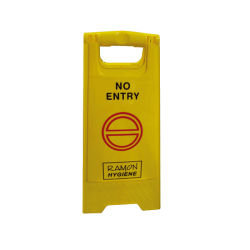Moving with Pets: How to Make the Transition Smooth
Are you planning a move and wondering how to make the transition smooth for your furry friends? Moving can be a stressful experience for both humans and pets, but with the right preparations and considerations, you can help alleviate their anxiety and ensure a smooth relocation process. In this article, we will provide you with essential tips and guidelines to make moving with pets a breeze. From pre-move preparations to post-move adjustments, we’ve got you covered. Let’s dive in!
1. Introduction: The Challenges of Moving with Pets
Moving to a new home can be a daunting task, especially when you have furry companions to consider. Pets are highly sensitive to changes in their environment, and a move can disrupt their sense of security and routine. To ensure a smooth transition, it is essential to plan ahead and take necessary steps to minimize stress and anxiety for your pets.
2. Pre-Move Preparations
Before the moving day arrives, there are several key preparations you should undertake to ensure a successful move for your pets. Go to this link https://cheapremovalists.au/removalist-frankston/ for services movers.
Research Pet Regulations and Requirements
Different locations may have specific regulations and requirements for pets. Research and familiarize yourself with the local laws, pet permits, and any restrictions that may apply in your new area. This will help you avoid any last-minute surprises and ensure compliance with the rules.
Schedule a Visit to the Veterinarian
Make an appointment with your veterinarian well in advance of the move. Ensure that your pet is up to date on vaccinations, and ask for a copy of their medical records. If you’re moving to a new area, inquire about any recommended vaccinations or preventative treatments for diseases prevalent in that region.
Update Identification and Microchip Information
It’s crucial to update your pet’s identification tags and microchip information with your new address and contact details. In case your pet gets lost during the move, this will increase the chances of a safe and swift reunion.
3. Packing and Transporting Pets
When it’s time to pack up your belongings and transport them to your new home, consider the following tips to keep your pets safe and comfortable throughout the journey.
Create a Comfortable and Secure Space
Prepare a designated area where your pet can feel safe and secure during the packing process. This can be a quiet room with their bed, toys, and familiar items. Ensure that the space is secure and inaccessible to movers to prevent any accidental escapes.
Pack Essential Supplies
Pack a separate bag or box with all the essential supplies your pet will need during the move and immediately after arriving at the new home. Include food, water, bowls, medication, toys, blankets, and any other items that provide comfort and familiarity.
Consider Hiring Professional Pet Movers
If you’re concerned about the logistics of moving your pets, consider hiring professional pet movers. These experts specialize in safely transporting animals and can provide a stress-free experience for both you and your pets.
4. Traveling with Pets
Whether you’re traveling a short distance or embarking on a long journey, it’s important to make appropriate arrangements to ensure your pets’ well-being during the trip.
Choose a Pet-Friendly Mode of Transportation
Select a transportation method that is suitable and comfortable for your pets. If traveling by car, make sure your pet is secured in a well-ventilated crate or carrier. If flying, research pet-friendly airlines and their specific requirements for pet travel.
Plan for Frequent Breaks and Exercise
During long trips, plan for regular breaks to allow your pets to stretch their legs, relieve themselves, and get some exercise. Find pet-friendly rest areas or parks along your route where they can safely explore and burn off energy.
Keep Your Pet Hydrated and Well-Fed
Ensure that your pet has access to fresh water and regular meals during the journey. Pack enough food and snacks to last the duration of the trip, taking into account any delays or unexpected circumstances. click on https://cheapremovalists.au/removalist-in-pakenham/ Take removalist services in your areas.
5. Settling into the New Home
Once you’ve arrived at your new home, it’s time to help your pets adjust and settle into their new environment.
Create a Safe and Familiar Space
Designate a quiet and comfortable area in your new home where your pet can retreat to if they feel overwhelmed. Set up their bed, toys, and familiar items to create a sense of familiarity and security.
Gradually Introduce Your Pet to the New Environment
Allow your pet to explore their new surroundings gradually. Start with one room and gradually expand their access to the rest of the house. Supervise their explorations to ensure their safety and provide reassurance along the way.
Stick to Familiar Routines
Maintain your pet’s familiar routines as much as possible. This includes regular feeding times, exercise routines, and playtime. Consistency will help them feel secure and reduce anxiety during the adjustment period.
6. Handling Pet Anxiety and Stress
Moving can be a stressful experience for pets, and some may experience anxiety or exhibit behavioral changes. Here are some strategies to help ease their anxiety and stress.
Provide Comfort and Familiarity
Offer plenty of comfort and reassurance to your pets during the transition. Spend quality time with them, engage in activities they enjoy, and provide extra cuddles and affection. Your presence and attention will help them feel safe and loved.
Use Calming Techniques and Products
Consider using calming techniques and products to help your pets relax. This may include playing soothing music, using pheromone diffusers, or providing them with anxiety-reducing supplements or treats. Consult with your veterinarian for appropriate options for your specific pet.
Consult with a Veterinarian if Necessary
If your pet is displaying signs of severe anxiety or is having difficulty adjusting to the new environment, consult with a veterinarian. They can offer professional guidance and recommend suitable interventions to support your pet’s well-being.
7. Conclusion
Moving with pets requires careful planning and consideration to ensure a smooth transition. By following the tips outlined in this article, you can minimize stress and anxiety for your furry friends and help them adjust to their new surroundings with ease. Remember to provide comfort, maintain routines, and be patient during the adjustment period. With proper preparation and attention to your pets’ needs, you can make the moving experience a positive one for everyone involved.
FAQs
1. How long before the move should I start preparing my pets? It’s recommended to start preparations at least a few weeks before the move. This allows you enough time to research regulations, visit the veterinarian, and make necessary arrangements for your pets’ well-being.
2. Can I sedate my pet during the move to keep them calm? Sedation should only be considered under the guidance of a veterinarian. It’s important to consult with a professional who can assess your pet’s specific needs and determine if sedation is appropriate.
3. Should I introduce my pets to the new home immediately upon arrival? It’s best to allow your pets to acclimate gradually to the new environment. Start with a small area and gradually expand their access as they become more comfortable and confident.
4. How long does it typically take for pets to adjust to a new home? The adjustment period can vary depending on the individual pet. Some may adapt quickly, while others may take several weeks to feel completely at ease in their new surroundings. Patience and consistency are key.
5. What should I do if my pet refuses to eat or shows signs of distress after the move? If your pet is experiencing appetite loss or severe distress, consult with a veterinarian. They can assess your pet’s health and provide appropriate guidance to address any underlying issues.




